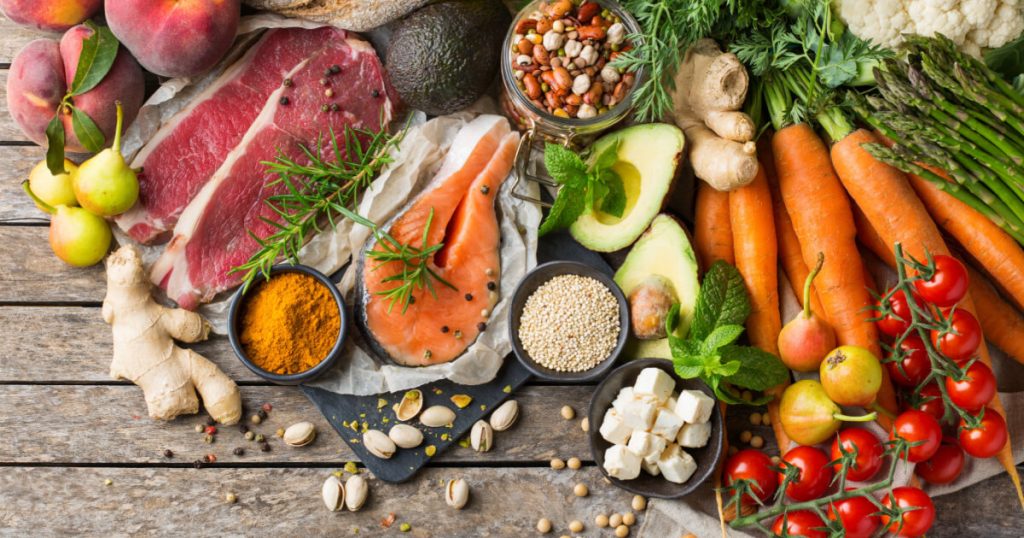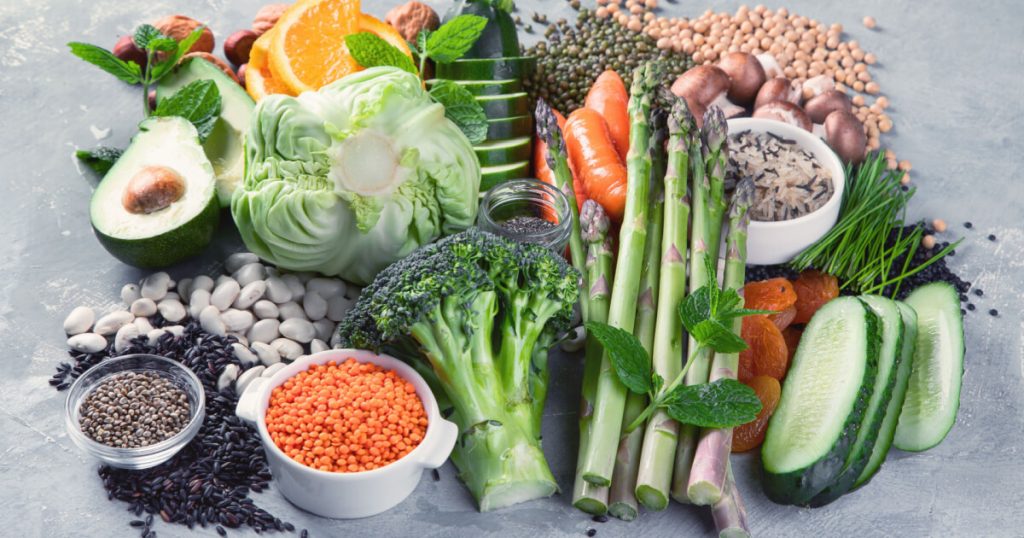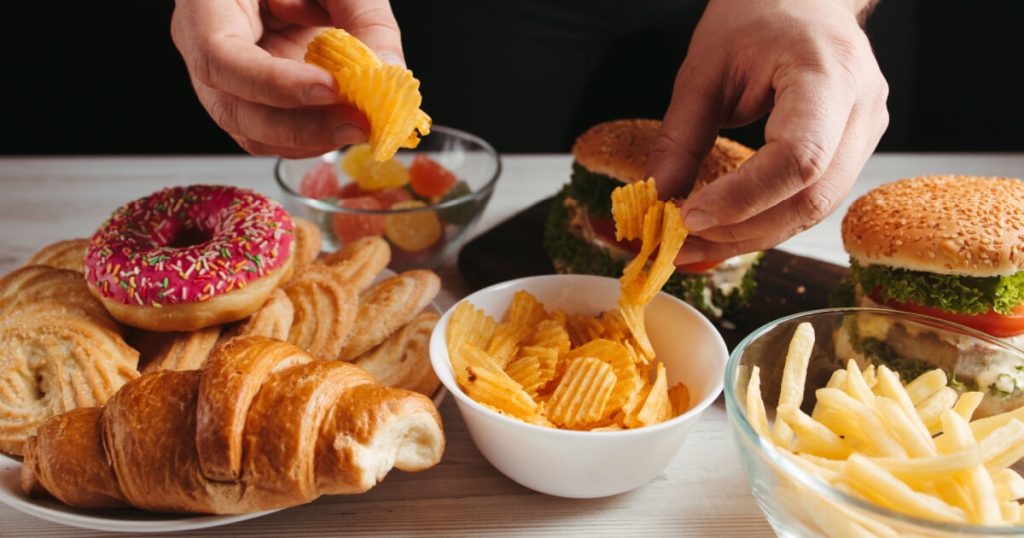Discovering the Best Diet for High Blood Pressure: A Guide to Heart-Healthy Eating
Almost half of American adults live on what is considered to be a poor-quality diet, which contains too little of the good things like whole grains, fruits, and vegetables and too much of the bad things like sodium, added sugars, and processed meats.
Your diet can have a massive impact on your body’s blood pressure regulation. You should pay attention to the things you eat to maintain healthy blood pressure. This article will talk about different diets that can help lower high blood pressure.

Master your heart health now
Take part in our 60sec quiz and get a heart health plan tailored just for you.
Contents
Popular Diets for Heart Health
By increasing and decreasing various components of your diet, you can potentially lower high blood pressure levels significantly.
Start managing your heart health now!
Find out what works for you with this 60sec quiz.

DASH diet: lower your blood pressure naturally

The Dietary Approaches to Stop Hypertension, or DASH, diet, is one that came about due to the findings of a major clinical trial. It showed a lifestyle modification like a healthy diet could be effective in lowering blood pressure.
The DASH diet helps to control high blood pressure by adding more of the foods that can keep hypertension at bay.
Below are the major foods that make up the DASH diet and the recommended servings:
- Fruits: 4–5 servings daily
- Vegetables: 4–5 servings daily
- Whole grains: 7–8 servings daily
- Low-fat dairy: 2–3 servings daily
- Lean meats: Less than 2 servings daily
- Healthy fats and oils: 2–3 servings daily
- Nuts, seeds, and beans: 4–5 servings weekly
As someone just starting off with the DASH diet, adhering can be hard. Fortunately, the Cardi Health app can make things easier for you. Not only can it make it easier to follow the DASH diet, but it can provide a personalized meal plan so you stay consistent and still only eat things you like.
Mediterranean diet: a heart-healthy lifestyle

The Mediterranean diet aims to imitate the major dietary trends of people in countries near the Mediterranean Sea. This diet is heavily plant-based with healthy fat intake.
This diet is valued if you want to lower blood pressure levels because it follows some of the recommendations of the DASH diet, reduces red meat, which can predispose to heart disease, and can help maintain a healthy weight, all of which can help reduce blood pressure.
The main components of the Mediterranean diet include the following:
- Plant-based foods:
- Whole grains
- Fruits
- Vegetables
- Beans
- Potatoes
- Nuts and seeds
- Healthy fats, though olive oil is the predominant choice
- Fish
- Poultry and eggs (occasionally)
- Wine with meals (occasionally)
Plant-based diet: nourish your heart with plants

A plant-based diet avoids eating foods from animal sources. For people with high blood pressure, it has been shown that different forms of plant-based diets can lower blood pressure. Both systolic blood pressure and diastolic blood pressure respond favorably to this kind of diet.
It’s thought that these diets can lower blood pressure through multiple means: they help with weight loss, salt intake goes down, they improve dietary potassium intake, and they also contain antioxidants and other natural components that can reduce blood pressure levels and the risk of cardiovascular disease.
Below are some examples of plant-based foods you can make your diet rich in to lower blood pressure quickly. Even if you aren’t a vegetarian or vegan, you can incorporate a lot of these into your diet to improve your blood pressure control.
- Potassium-rich foods like bananas, avocados, spinach, and coconut water can reverse the impact of sodium on your blood pressure.
- Calcium-rich foods like dark leafy greens, almonds, beans, and chia seeds can help maintain healthy blood pressure, as calcium is essential for normal blood vessel function.
- Healthy fats can be obtained from foods like avocados, olives, walnuts, flax seeds, and more.
- Whole grains can be extremely helpful for the diet of someone with high blood pressure. They are full of fiber, and this can help maintain healthy blood pressure, blood glucose, and cholesterol. Add more oats, rice, quinoa, and rye to your diet.
Foods to Include in Your High Blood Pressure Diet
If you want to modify your diet for lower blood pressure, there are many key foods and nutrients that you should aim to include.
Berries for a burst of antioxidants
These sweet little fruits are a tasty way to regulate blood pressure. These fruits are well known for their high antioxidant content, containing unique substances like anthocyanins, tannins, and ellagic acid.
Here are examples of berries that can help lower your blood pressure if you have hypertension:
- Blueberries
- Strawberries
- Raspberries
- Açaí berries
- Cranberries
- Grapes
Add them to your breakfast cereal or oats, blend them into smoothies, or simply eat them as snacks instead of a bag of chips.
Leafy greens – the nutrient powerhouse
Leafy greens include vegetables like kale, spinach, collards, bok choy, Swiss chard, arugula, and more. These are packed full of healthy nutrients that can help lower blood pressure. These vegetables tend to have plenty of nitric oxide, which has been directly linked to reduced blood pressure.
Fortunately, these foods for high blood pressure treatment can easily be added to a heart healthy diet. Salads provide an excellent opportunity to add them, but they can also be added to pasta and rice dishes pretty easily.
Fatty fish and omega-3s
Omega-3 fatty acids are likely the most popular healthy fat, and they are also known as essential fats because they have to be gotten from certain foods; the body is unable to make them on its own.
They play many important roles in the body, including playing a big role in manufacturing hormones that control the function of blood vessels and inflammation.
Certain kinds of seafood are the richest sources of these fatty acids, including:
- Salmon
- Anchovies
- Halibut
- Tuna
- Trout
- Mussels
- Sardines
Fish and seafood are easy substitutes for meat in many dishes, so you can replace the fatty meats that you’d ordinarily eat with fish rich in omega-3 fats.
Start managing your heart health now!
Find out what works for you with this 60sec quiz.

Whole grains
Foods with whole grains have plenty of fiber in them, and this can help lower your cholesterol levels and reduce the risk of heart disease, which is good news for anyone trying to reduce blood pressure. They also have plenty of vitamins and minerals that can directly benefit the immune, endocrine, and cardiovascular systems.
Examples of these foods are brown rice, oats, quinoa, and products made from whole-wheat flour.
Instead of eating white rice, move to brown rice or quinoa. Instead of eating white bread, switch to whole-wheat bread, and instead of processed foods like breakfast cereals, you can go for oats or whole-wheat cereals like raisin bran.
Legumes and other plant-based protein
Legumes, or beans, come with plenty of clinical nutrition benefits. They are very rich sources of protein, fiber, and minerals. When compared to animal proteins, you don’t need to worry about saturated fat.
Plus, beans and legumes can help regulate blood cholesterol, which means they can help manage high blood pressure.
Legumes and products made from them include:
- Black beans
- Garbanzo beans
- Pinto beans
- Lima beans
- Kidney beans
- Soybeans and tofu
- Lentils
- Peanuts
- Chickpeas and hummus
Beans can go into rice and pasta dishes, be added to salads, find their way into wraps, or be eaten with toast. You can also use hummus and tofu in creative ways to get the same benefits.
Foods to Avoid if You Have High Blood Pressure

While there are certain foods you should eat for reduced blood pressure, you should also avoid foods that are known to increase blood pressure.
Sodium
The average American has a sodium intake beyond what is recommended daily. Most sodium in the diet isn’t from table salt that you add to food you make at home but is found in packaged and processed foods.
Sodium is well established to increase blood pressure, which unfortunately predisposes to more cardiovascular diseases like stroke and heart attacks.
If you have high blood pressure, you should aim to avoid the following sodium-heavy foods as part of your healthy eating plan:
- Processed, cured, and smoked meats like bacon, cold cuts, sausages, ham, or canned meat
- Salted nuts
- Fast foods like burgers, pizza, french fries, etc.
- Canned foods preserved in salted water
- Many cheeses
- Bread and rolls
- Packaged condiments, dips, and sauces
- Snacks like chips, crackers, and cookies
Many foods have low-sodium alternatives that you can turn to to help lower blood pressure. Try these tips for your high blood pressure, low-sodium diet:
- Opt for low-sodium or no-salt variants of canned foods like soups, beans, and vegetables.
- Try to eat less fast food.
- When eating at restaurants that prepare your food from scratch, ask for no salt to be added.
- Ask for sauces and condiments to be served on the side.
- Go for fresh lean meat instead of processed choices.
- Switch out snacks and sweets with fruits or unsalted popcorn.
Processed foods
Foods that have been processed are those that have undergone some kind of alteration during preparation and are no longer fresh. This means they could have been frozen, canned, dried, or even just cooked.
Keep in mind that not all foods that have been processed are bad for you. Sometimes processing is needed to make the food edible.
However, chances are that they contain a lot of salt, sugar, or fats (checking food labels can help you be sure of what you’re about to eat). These can all have a negative impact on your health when they are a regular part of your diet, particularly with how they can lead to high blood pressure.
While it is understandable that you might not be able to buy all your food fresh, you can try where possible. A solid meal plan can make it easier for you to cook a lot of meals from fresh ingredients.
Sugary beverages
It’s been found that sugary beverages, whether soda or fruit juices, can have a negative impact on blood pressure. In fact, they can elevate blood pressure immediately.
Minimize consumption of sugary drinks like:
- Fruit juice
- Soda
- Energy drinks
- Sports drinks
- Sweetened coffee and tea
- Milkshakes
You can opt for water, tea, and coffee without added sugar, beverages that use sugar substitutes, and even flavored water.
Trans fats
When it comes to dietary fats, trans fats are the worst kind that there are, and they can contribute significantly to high blood pressure.
This is because they can increase bad cholesterol and reduce good cholesterol levels, and this can cause cholesterol build-up in blood vessels, which increases hypertension risk.
You can get trans fats from various sources, including:
- Fried foods like chicken, donuts, french fries
- Baked foods like cakes, biscuits, cookies, crackers
- Shortening
- Stick margarine
- Refrigerated dough
- Frozen pizza
A lot of our favorite foods might have trans fats in them. Making dietary changes to eliminate them can be hard, but it is important. It is important to check the Nutritional Facts label on packaged foods that you buy and to opt for options that are trans fat free.
Start managing your heart health now!
Find out what works for you with this 60sec quiz.

FAQ
What is the DASH diet?
The DASH diet, or Dietary Approaches to Stop Hypertension, is a diet designed to help control high blood pressure by emphasizing foods that combat hypertension.
How does the Mediterranean diet assist in lowering blood pressure?
The Mediterranean diet is a plant-based diet with healthy fats, reducing red meat intake, and helping maintain a healthy weight, all of which contribute to reduced blood pressure.
Are all processed foods bad for high blood pressure?
Not all processed foods are detrimental, but many contain excessive salt, sugar, or fats, which can raise blood pressure. Always check food labels.
What are trans fats and why are they harmful?
Trans fats can increase bad cholesterol and decrease good cholesterol, leading to increased blood pressure. They’re found in some fried and baked foods.
Best Diet for High Blood Pressure: Key Takeaways
The things you eat and the things that you don’t eat can all have a big impact on your blood pressure.
The DASH eating plan was made to minimize a person’s risk by increasing fruits, vegetables, low-fat dairy products, and more and reducing saturated fat, full fat dairy products, and added sugars. Other diets can also help your hypertension.
To keep your heart healthy, following the right dietary guidelines is key. One way to make this easier on yourself is by using the Cardi Health app, which can not only help you track your blood pressure over time but can build a personalized meal plan containing the best foods for you.
Related articles
Best Foods to Lower Cholesterol
Does Caffeine Raise Blood Pressure?
Does Drinking Water Lower Blood Pressure?
Causes of High Blood Pressure at Night
10 DASH Diet Breakfasts for a Healthy Start
Heart-Healthy Diet Guide
What Should an 85-Year-Old Blood Pressure Be?
What is Normal Blood Pressure for a 70-Year-Old?
How to Read Blood Pressure: A Comprehensive Guide
Manage your heart health now
Find out what works best for you with this 60sec quiz and get your personalized heart health plan.

